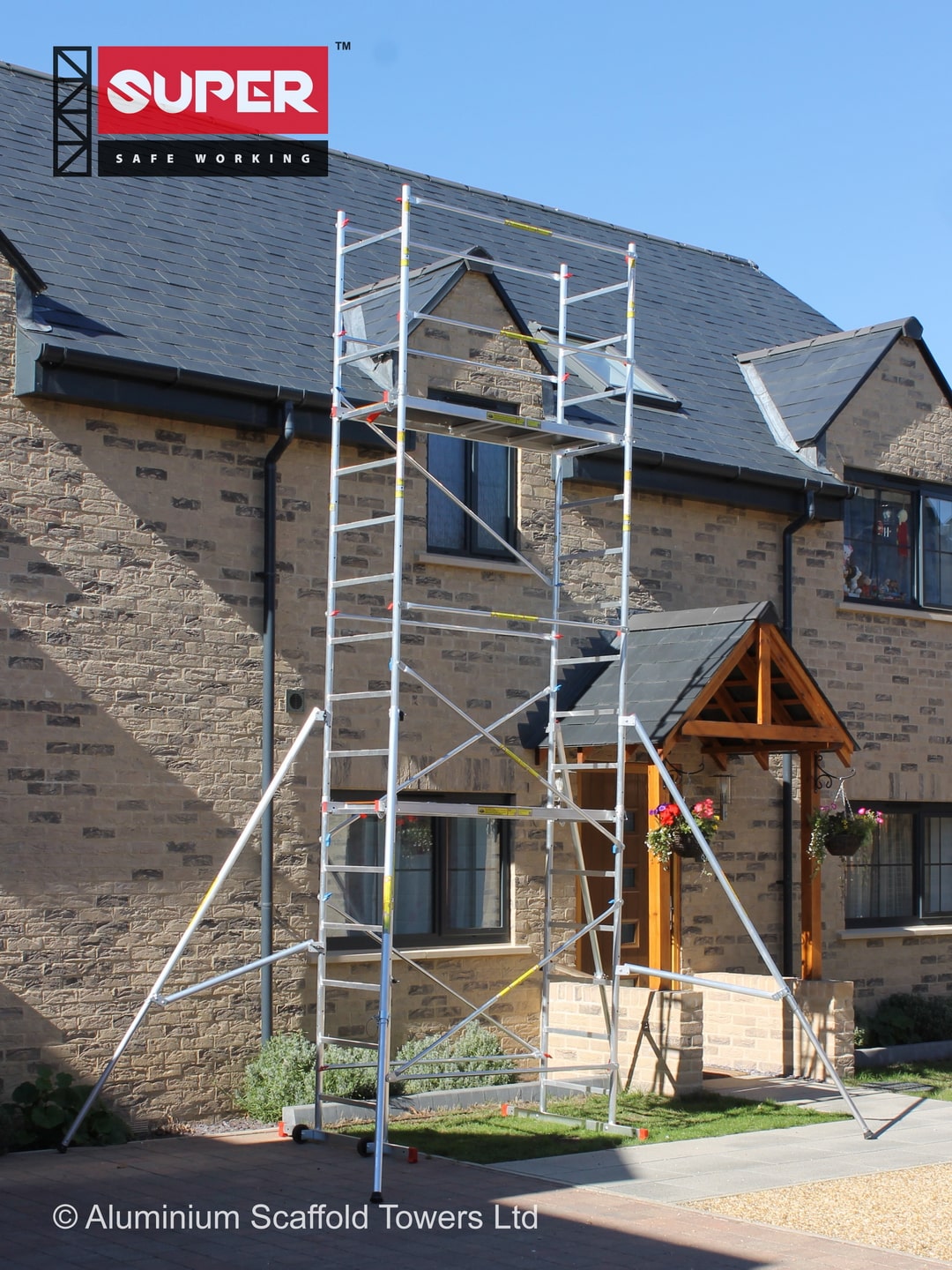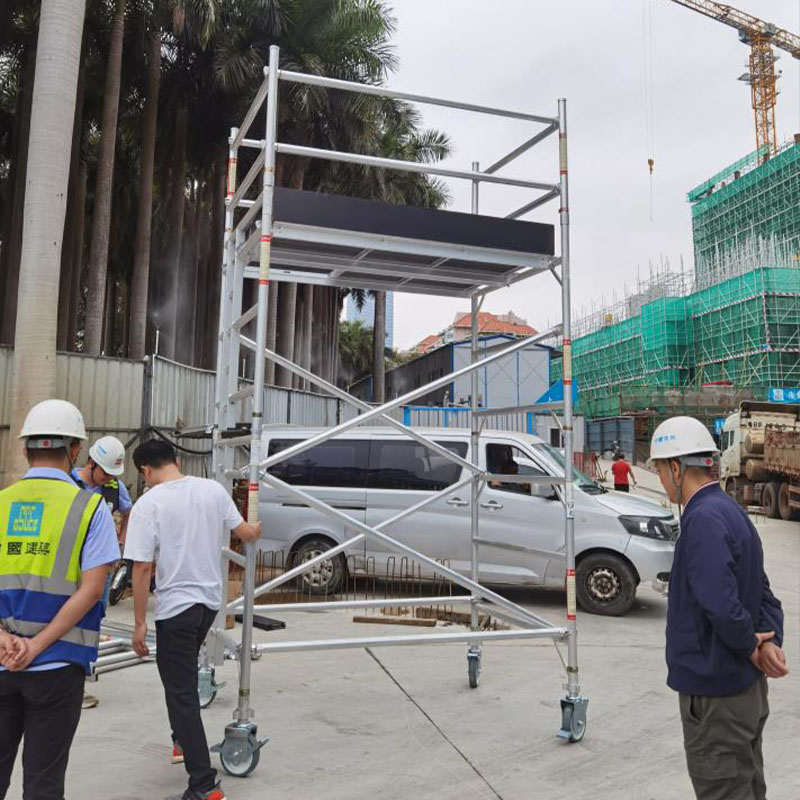The Future of Scaffolding: Trends and Advancements
Technologies in scaffolding are transforming building and construction. Advanced materials boost safety and security and effectiveness. Layout methods prioritize safety policies and security. Digital tools streamline procedures and boost safety and security metrics. Automation quickens building and boosts accuracy. Sustainability practices advertise environmentally friendly structures. Welcoming these patterns brings about safer, efficient, and greener structure techniques.
Advanced Products in Scaffolding
The assimilation of advanced products in scaffolding has actually reinvented the building market by enhancing security, effectiveness, and durability. Lightweight durability is an essential feature of these materials, providing the essential strength without including excessive weight to the structures. Cost-effective stamina is an additional benefit, as these products provide high efficiency at a practical price, making them a favored selection for construction jobs.
Along with their functional advantages, advanced materials in scaffolding likewise add to sustainability initiatives. Green compounds are being significantly utilized in scaffolding building, decreasing the environmental effect of building tasks. These products are recyclable and have a reduced carbon footprint, aligning with the sector's change towards greener practices.
Moreover, the use of advanced materials has actually led to the production of ingenious frameworks that were formerly unattainable. Engineers and engineers now have extra versatility in style, permitting the construction of complex and unique scaffolding systems that meet specific task needs. This level of personalization and versatility showcases the enormous possibility of integrating sophisticated products in scaffolding.
Design Techniques for Security
Incorporating style strategies focused on safety is critical in making sure the very best efficiency and threat mitigation of scaffolding frameworks in building jobs. Adhering to safety and security guidelines and carrying out ergonomic frameworks are vital factors in advertising a safe and secure workplace for construction workers.

When it involves developing scaffolding systems, below are some essential considerations:
- Load-Bearing Ability: Ensuring that the scaffolding is developed to bear the intended load capability as per safety and security regulations is crucial for preventing collapses and mishaps.
- Fall Protection Includes: Integrating guardrails, toe boards, and safety netting can significantly decrease the threat of falls from heights, lining up with rigid safety requirements.
- Stability Enhancements: Creating scaffolding frameworks with features such as flexible bases, outriggers, and supporting systems can enhance security, lowering the probability of toppling or structural failures.
Digital Tools for Efficiency
Utilizing innovative digital devices can significantly improve the efficiency and efficiency of scaffolding procedures in the building and construction market. By including digital solutions, companies can enhance processes, enhance safety measures, and enhance resource allocation. One essential area where electronic tools prove vital is in tracking performance metrics. Through the use of specialized software, task managers can monitor progress in real-time, identify bottlenecks, and execute remedies promptly, resulting in smoother process and prompt job completion.
Moreover, online training has actually become a game-changer in scaffolding operations. Rather than traditional on-site training, virtual reality (VR) and boosted reality (AR) modern technologies provide immersive knowing experiences for scaffold erectors and examiners. This not just improves their skills however also ensures a much deeper understanding of safety and security protocols and best techniques. Online training sessions can be accessed remotely, saving time and resources while permitting individuals to discover at their own rate.
Automation in Scaffolding Sector
Automation is revolutionizing the scaffolding market by simplifying processes and enhancing total efficiency. With the combination of wise technology, scaffolding business are currently able to utilize robotic assembly systems to speed up the construction procedure and improve safety standards.
- Robot setting up systems are being made use of to preassemble scaffolding elements off-site, lowering manual work and assembly time on the building site.
- Smart technology allows for real-time monitoring of scaffolding frameworks, enabling early detection of potential concerns and improving total safety and security procedures.
- Automation in the scaffolding market not only raises productivity however also decreases human error, causing extra exact and trustworthy scaffold frameworks.
As the need for faster and much more cost-effective construction remedies remains to climb, the adoption of automation in scaffolding verifies to be a pivotal improvement. By welcoming robot assembly and wise innovation, scaffolding companies have the ability to satisfy the challenges of modern-day building and construction projects with increased effectiveness and accuracy.
Sustainability Practices in Building
The implementation of sustainable techniques in building has become increasingly necessary in today's ecologically aware landscape. Environment-friendly structure initiatives are at the leading edge of developing structures that are energy-efficient, environmentally friendly, and helpful for occupants. Incorporating renewable energy resources such as solar panels, wind generators, and geothermal systems right into construction jobs is ending up being more common to lower dependence on non-renewable sources and reduce carbon footprints.
Environment-friendly building accreditations like LEED (Leadership in Power and Environmental Style) are driving the promotion of lasting methods in the building and construction sector. These accreditations ensure that structures are created, built, and run with sustainability in mind, advertising source effectiveness and healthy and balanced indoor environments.
Regularly Asked Concerns
Just how Does the Expense of Advanced Materials in Scaffolding Compare to Typical Products?
Price evaluation of advanced products in scaffolding versus standard products discloses that while initial investment may be greater, long-lasting advantages such as enhanced durability and safety can surpass the ahead of time expenditures. Product comparison highlights the worth of advanced options.
Exist Any Kind Of Style Techniques Specifically Tailored for Extreme Weather Issues?
In resolving severe weather condition durability, scaffolding design can integrate cutting-edge materials such as weather-resistant finishings, enhanced frameworks, and modular elements to hold up against harsh problems. These tailored strategies enhance security and toughness on-site.
Can Digital Tools Be Integrated With Existing Scaffolding Equipments, or Are They Only Suitable With New Layouts?
Digital devices can be incorporated with existing scaffolding systems, providing enhanced effectiveness and safety. Compatibility relies on the technology made use of and the versatility of the present structures. Both brand-new and old scaffolding designs can benefit from technological advancements.
What Influence Does Automation Carry the Ability Level Required for Workers in the Scaffolding Market?
Automation in the scaffolding sector has a profound effect on the needed ability level of employees. https://balhamscaffolding.co.uk As automation improves processes, employees may require to adjust by obtaining more technical skills to run and keep automated systems efficiently.

How Do Sustainability Practices in Building And Construction Especially Profit the Scaffolding Market in Terms of Lowering Waste and Environmental Influence?
Sustainability techniques in building and construction benefit the scaffolding sector by decreasing waste through effective product use and taking down procedures. This not only minimizes environmental impact yet likewise advertises cost savings and greater efficiency gains.
Conclusion
To sum up, the future of scaffolding is being affected by improvements in materials, layout strategies for safety, electronic tools for performance, automation in the sector, and sustainability methods in building.
These fads and innovations are pushing the scaffolding market towards higher safety, performance, and sustainability.
As modern technology remains to develop and brand-new materials are created, we can anticipate a lot more renovations in the method scaffolding is made use of in building and construction projects.
